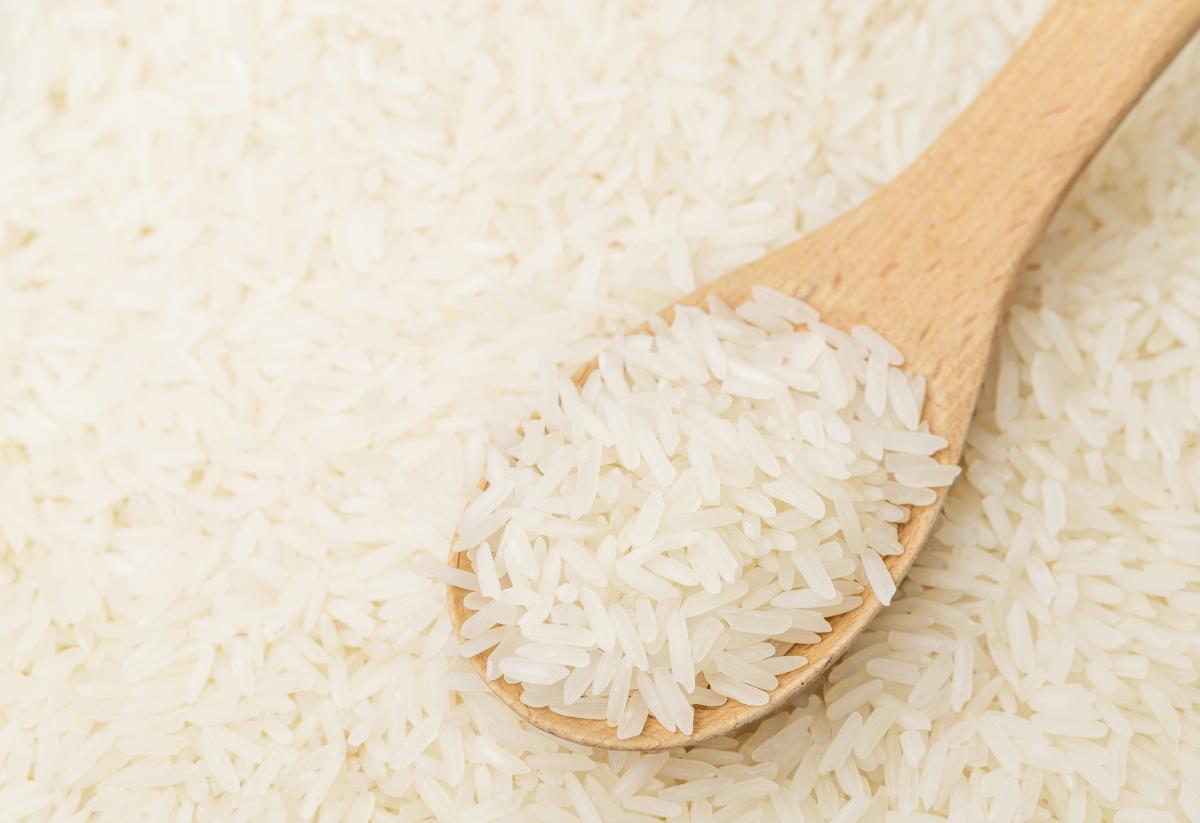FROM adulterated rice to fake whisky, the trade in counterfeit foods is prevalent across Asia. Many lucrative food products are vulnerable to counterfeiting and they are now the fourth highest form of counterfeit goods totalling US$49 billion a year.[1]
Recent headlines have captured the scale of the issue across Asia. In Malaysia authorities seized RM250,000 (US$60,000) worth of imitation products of the popular MILO chocolate malt drink. In May this year, plastic rice reportedly made from potatoes, sweet potatoes, with synthetic resin molded into the shape of real rice, made its way into countries with large rural populations such as India, Indonesia and Vietnam. In Bangkok, the Royal Thai police raided a warehouse and recovered more than 270 bottles of fake whisky, as well as forged stickers, labels and packaging.

This year, we heard of counterfeit rice made out of potatoes, sweet potatoes, even synthetic resin (Photo: White rice on teaspoon © Leung Cho Pan | Dreamstime.com)
Counterfeiting foods is not just an issue in developing markets. Premium Australian meat is a particular target. David Blackmore, who pioneered the production of 100% Fullblood Wagyu beef in Australia, a product that is in high demand around the world, fell victim to counterfeiters three years ago.
The overriding concern is consumer health and safety. Counterfeit foods can seriously harm people and in some cases have proven fatal. In China in 2008, the industrial chemical melamine used to increase protein in baby milk powder resulted in deaths but also showed that counterfeiters were becoming more sophisticated in their use of technology to produce counterfeit products.
The business of selling fake products has dire consequences for the legitimate global companies that invest significantly in research and development of their products. Counterfeit products cause a decrease in sales and profits, as well as a loss of brand trust and value. In turn, this can result in both job losses and lower wages, according to the International Anti-Counterfeit Coalition.
The lack of information about the importance of consumer goods authentication is one of the main factors that allows counterfeiting to flourish. Fake products bear identical names, packaging and colour patterns as the original products with precise accuracy, making it increasingly difficult for consumers to distinguish real products from the counterfeit goods.
Food companies need to be aware that as soon as their product becomes successful, someone is likely to try to copy it or steal their brand. It is critical for companies to take effective measures to protect their brands and secure packaging is one of the essential techniques to avoid counterfeiting.
Anti-counterfeiting packaging
Anti-counterfeiting packaging is the process of secure packaging that prevents imitation and confirms safety of the goods. Anti-counterfeit measurements are assisting companies with minimizing loss due to counterfeiting in terms of revenue and loyalty. The global anti-counterfeit packaging market accounted for US$57.4 billion in 2013, which is forecast to generate revenue of US$142.7 billion by 2020 at 13.9% CAGR from 2013-2020.[2]
The number of levels at which authentication, tamper-evidence, and track-and-trace elements can be added to products, and particularly to their packaging, has grown significantly. The three major solution platforms employed today are as follows:
Visual authentication is the method of using the naked eye or a scanner to identify flaws. Visual authentication packaging features include overt and covert holograms, physical and digital watermarks, specially designed inks and dyes and taggants for detection and identification.
A number of toothpaste brands effectively use anti-counterfeit holograms affixed on the toothpastes’ packaging. This method can provide immense value to food brand owners looking to protect their products.
Track and trace systems are implemented throughout the supply chain. These systems consist of special barcodes, labels made from different materials like paper, aluminum, polyester, ceramic and radio frequency identification.
For instance food companies print a unique identifying code onto each product after it has been packaged; these are very useful, especially during supply chain quality checks, for quality control and safety.
On– or in-pack technologies are often used on high risk items and are very difficult or impossible to replicate. An example of this is the development of the two-dimensional barcode found on many pharmaceutical products.

"Food companies need to be aware that as soon as their product becomes successful, someone is likely to try to copy it or steal their brand"
Esguerra, Senior director, Sustainable Supply Chain & Quality Systems, APMEA, HAVI Global Solutions
Tamper-evidence to reassure consumers
The measures outlined above can be strengthened by tamper-evidence features on the packaging. Overt, entry-level security devices often used on packages are familiar to consumers and are a first-line choice as a means of reassurance of brand authenticity and purity. Good examples are over-the-cap, easily frangible p-s paper seals on jars and bottles, as well as perforated stretch or shrink sleeves over the neck and cap of bottles, which provide ready visual evidence of tampering.
Schreiner MediPharm, a German-based supplier of specialty pharmaceutical labels, recently introduced its Flexi-Cap, intended to protect bottles from counterfeit and tampering efforts. The label/cap combination is similar to what is used on wine bottles but conforms to pharmaceutical industry requirements, making it clear if a bottle has been opened. This prevents counterfeiters from reusing medicine containers and presenting them as original, unopened products. Unlike shrink-wrap solutions, Flexi-Cap labels are created without heat, making them applicable for temperature-sensitive medicines. Labeling and branding remain unchanged, so Flexi-Cap can easily be integrated into existing production lines.
Raising awareness to help consumers detect counterfeit products
After the successful raid and seizure of fake MILO chocolate malt drinks, food and beverage giant Nestlé Malaysia has taken direct action to help its consumers avoid the counterfeit products. In addition to working with local authorities, the company is leveraging its social media assets in a campaign to raise consumer awareness of the issue. One effort on the company Facebook page shares a photo showing consumers how to identify counterfeit MILO packaging based on the perforation of its pack. The company is urging consumers to buy MILO from reputable retailers but also asks them to contact Nestlé customer service if they unintentionally buy fake MILO product.
A food company’s image is dependent on its ability to deliver clean and safe food for consumers, and the concern is that counterfeiting is undermining consumer confidence in original brands. Counterfeiters have sophisticated techniques to make changes on a scientific basis to figure out what they can do to a product to increase its commercial viability. And while most savvy shoppers can figure out a fake purse being sold for $15 is probably not authentic, it is hard to tell that a bottle of virgin olive oil is diluted with corn oil.
With counterfeiting figures continuing to grow and counterfeiters getting closer to copying original packaging designs, it is more critical than ever for food companies to invest in anti-counterfeit packaging technology that will protect their brands and reverse the expansion of fraud businesses.
The fitness for purpose of such product security solutions and the continuing drive to create new dimensions makes them a valuable addition to any packaging converter’s or label converter’s business model. Adding track-and-trace and authentication technology to a label or package is a real benefit for a brand owner and can promote customer loyalty as well as delivering improved profitability.
However, this is a field in which continuous change and development are necessary; providing the solutions developed at today’s higher echelons of authentication technology is not for the faint-hearted, since it requires specialist expertise and in many cases specialist inventory. That said, this is an opportunity for converters of all packaging to offer added value in a global marketplace where consumer safety is becoming ever more paramount.
KD VIII Elite High














